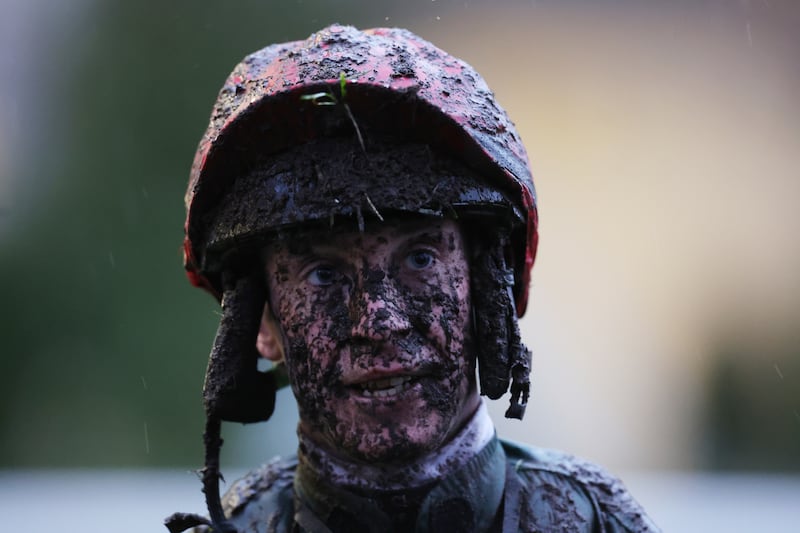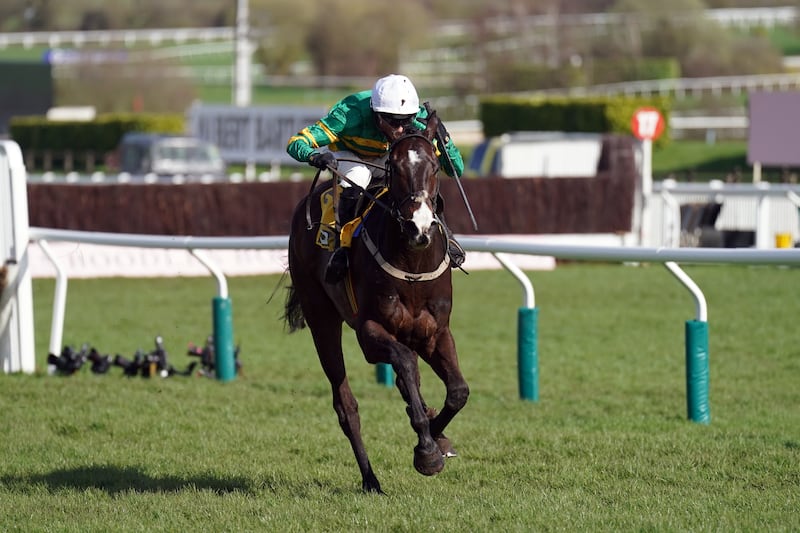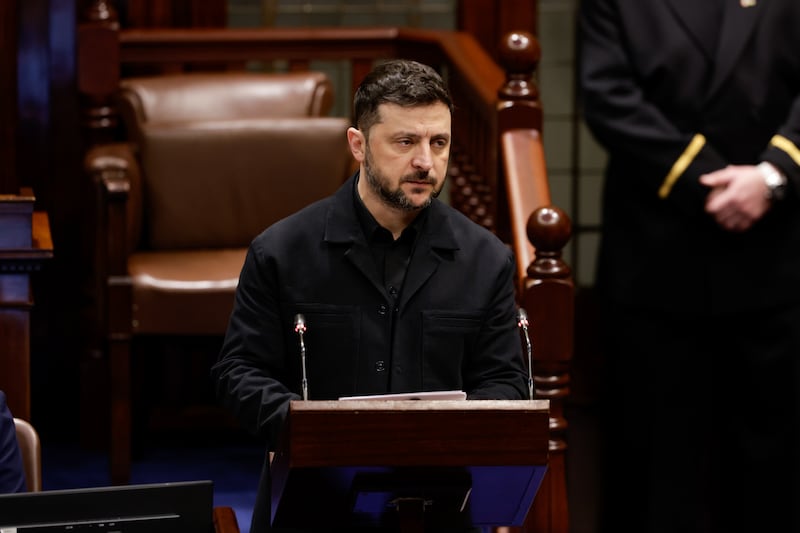Seán Ronayne’s nickname in school as a child was Nature Boy. His classmates had their heads shaved. He had a mop of curls. They wore Nike runners. He wore green Doc Martens. When given the opportunity, he would commandeer the nature table, bringing in leaves, flowers, skulls, eggshells, deer antlers. It was the space he loved most in the classroom, and nature – a class during which he would sometimes land himself in trouble for correcting the teacher – his favourite subject. Ronayne, a highly skilled ornithologist and wildlife sound recordist, is the subject of a remarkable new feature-length documentary, Birdsong, directed by Kathleen Harris, which will be broadcast on RTÉ on May 26th.
Birdsong premiered at the Dublin International Film Festival earlier this year, and Harris was selected as one of the festival’s Discovery Award Nominees for emerging talent. With Birdsong, they’re partnering with Birdwatch Ireland and Pocket Forests. Ronayne wants to encourage as many people as possible to sign up for Birdwatch Ireland membership. Harris is hoping they can also raise funds to plant a mini native forest in Ballymun in Dublin.
Growing up in Cork, close to Cuskinny Marsh Nature Reserve in Cobh, Ronayne was a self-described “hyper” child. He couldn’t sit still and found it hard to occupy himself indoors. His parents quickly learned that one way to diffuse his energy, stop him crying and running around, was to bring him out in nature. One of his earliest memories is as a child in a pram, seeing and hearing birds. His father could mimic the sounds, and Ronayne, in turn, would copy. A sense of calm would descend upon him.
When he learned to speak, he asked his father about plants, fish, otters, badgers. He brought home everything from shells to animal droppings. “My father was raised out there, his father too was the same,” he says of Cuskinny. “They would spend their hours out there wandering the fields, the woods, the marsh, the shoreline. It has a little bit of everything, a multitude of habitats.”
READ MORE
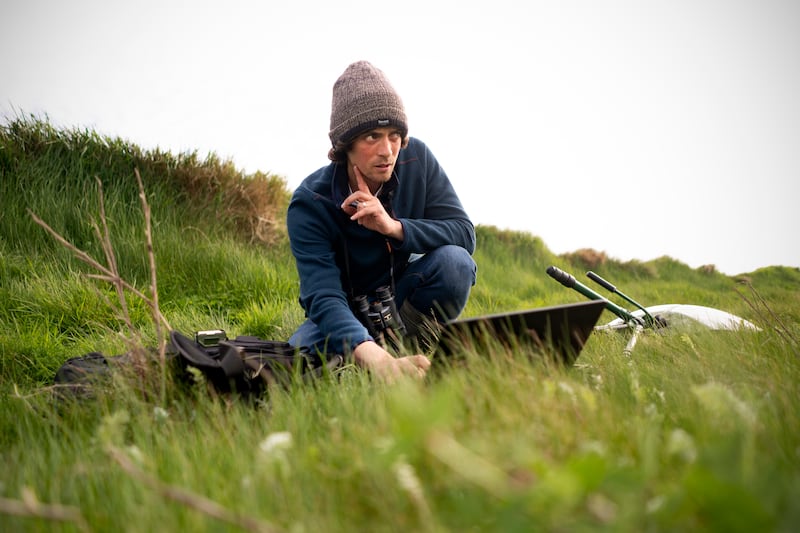
Now, Ronayne is in the middle of reclaiming the title Nature Boy, bestowing it on a book he is writing, and a talk at this year’s Beyond the Pale festival in Wicklow. The book, like the documentary, are not things he necessarily envisaged happening. In 2022, the head of the video at The Irish Times, Chris Maddaloni, spotted a post on social media, where Ronayne said he was attempting to record the bird song of every species on the island of Ireland. At the time, the video department was working on a series about people with unusual jobs.
Harris, then a video journalist with The Irish Times, was dispatched to meet Ronayne in Killarney National Park at dawn. Ronayne was slightly apprehensive about the encounter, having never really interacted with the media or assumed a public role. Indeed, public speaking used to be his greatest fear. “He wanted to see if he could find a woodpecker,” Harris says. She spent the day with Ronayne, he found his woodpecker, and made an impression on Harris. “He was such a unique personality,” Harris says, “there was an authenticity to him, such a joy and excitement for things that mean a lot to me as well, a love for the natural world. He was able to talk about it in such a beautiful, poetic, but accessible way. He had all these little anecdotes about different species of birds he was sharing with me.” Harris decided to pursue a longer documentary with Ronayne, brought the idea to the producer Ross Whitaker, and it began to take shape.
In 2023, filming kicked in. This was when Ronayne was on the final stretch of his monumental project. By that stage, the birds he was trying to record were hard to find, many of them ground-nesting, such as corncrake on Tory Island, and skylark, “They’re rare because of the fact that we’ve intensified our agricultural systems so greatly,” Ronayne says, “We now cut silage fields up to four or five times a year, whereas in the past, they would have been cut by hand in September. Anything that was nesting in those meadows, taking shelter in the wildflowers, would have raised young no problem. Sometimes they would have even been double-brooded, they would have raised two batches of young. But now, they don’t get a chance to raise a single batch. And if they do, if they are fooled into nesting in there, when the vegetation is high up in, say, late-April, they’ll get cut up, which is what happens.”
Ronayne’s work, like the documentary, is bittersweet. There’s his enthusiasm and love for wildlife, the epic journey of the recording project, but also the stark reality that the reason the project is complicated is down to horrific ecological degradation and habitat loss in Ireland. Still, the beauty of our natural landscape and the wildlife it’s desperately holding on to signals a stunning clarion call to action, protection and preservation.
I realised there was a large migratory flyway happening every night right over my head; flamingos, little bitterns, night herons, bee-eaters, great-spotted cuckoos
— Seán Ronayne
Ronayne always knew he wanted to study something related to animals, “I never had dreams of making lots of money or being successful. I didn’t care about that. I wanted to follow what I loved the most and what I knew made me happy, and that was nature.” As a teenager, he researched college courses before landing on biological, earth and environmental sciences in UCC. His dissertation was on the feeding and breeding ecology of little egret in Ireland.
As with every conversation with Ronayne, one mention of a species prompts a captivating lesson, “Little egret is a member of the heron family, it only bred in Ireland for the first time in 1997,” he says, “I remember my father pointing them out to me and explaining to me that they were blown over here by a storm. That’s a simple way of explaining something to a child, but what happened was they just expanded their range from further south.
“They took a bit of a hammering back in the day because they have these great long white plumes that were used by the fashion industry, so they were hunted a lot for those. But they became protected at some point and then their numbers began to replenish, and the populations expanded out. At that time, there was no understanding of their ecology in Ireland, so I knew not only would I be conducting research that would be interesting, it would be adding to our knowledge of the species and help us protect it in the future.”
Early on in his career as an ornithologist, he moved to Catalonia, the home of his partner, Alba. When Ronayne landed there in 2018, he realised there were many bird sounds he was unfamiliar with in the region. He bought a second-hand Olympus LS12 sound recorder on eBay for €90. In the beginning, the gear frustrated him. He bought a DeadCat (a microphone windshield), and for the first six months in the city, became more familiar with local birdsong. Gradually, the equipment and the sounds it gathered became “more about capturing the beauty of what I was hearing”.
Then, at a festival, Ronayne attended a talk by Magnus Robb, a classically trained musician and bird sound recordist, who was handpicked by the avid birder and chief executive of Lush cosmetics Mark Constantine, for the group Sound Approach, which records birdsong around the world. Robb spoke about nocturnal bird sound recording. Ronayne was living in a small flat in Barcelona at the time, surrounded by other apartments, with very little vegetation around. He put his sound recorder out on the balcony at night and waited, “I realised there was a large migratory flyway happening every night right over my head; flamingos, little bitterns, night herons, bee-eaters, great-spotted cuckoos, all sorts of things were calling every night flying south. Then, it became more than just identifying things. It was starting to open up a new world.”
After that, he set himself a mission: record the sound of a wallcreeper in Spain, “one of the rarest and most elusive birds over there”. Ronayne explains the habitat and behaviour of the bird, “They breed high up in the Pyrenees. They’re insectivorous. They have a long, curved beak and they use it to pick spiders out of webs in the crevices way up in the Pyrenees, 8,500 feet up. In the winter, it’s too harsh up there and there’s no insect life for them, so they come down to lower ground. They look for habitats that reflect these high peaks but on lower ground; old quarries, cathedrals, big bridges. I started to look for them there and I just could not find them. That went on for about two years. Eventually, I got a tip-off of a potential spot way up in the Pyrenees in summer. It’s like a needle in a haystack then. They’re really rare, and they’re way up in the tops of the Pyrenees, which are vast. I went up there and I stumbled across them, and I got a sound recording of it. It was the first sound recording of a wallcreeper made over there.”
Unable to continue his guided birdwatching tours during lockdown, a journey back to Ireland was planned, “I came home, and thought: this is what I’m going to do, I’m going to capture the sound of every bird in Ireland and see where it takes me.” He arrived back in Cork before Christmas 2020, pointed his recorder at a bird feeder, and got to work. (Ronayne isn’t a fan of bird feeders, by the way, considering them as disease hotspots that disproportionally boost certain species.) On the first day, he recorded about 15 species, all common garden birds. Every day he ventured out as lockdown restrictions eased, he picked up five or 10 new species. In the first year, about 150. In the second year, about 20 or 30. Then things got tougher.
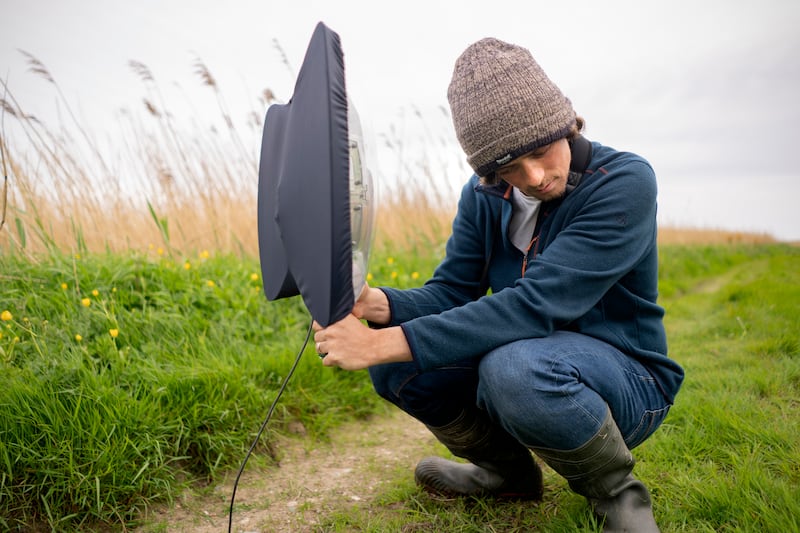
When Harris began filming, Ronayne had around a dozen species left to record, “As time went by, they were rarer, scarcer, less vocal, harder to find, and sometimes a combination of all four.” Take, for example, recording the golden eagle. “It’s rare,” Ronayne explains, “It’s long-ranging, so a bird in Donegal could fly across to Scotland no problem to feed and then come back. They’re also really silent. The last year, there were lots of species like that.”
Some of the most remarkable scenes in the film happen at the Skellig Islands, “one of the most important seabird colonies in Europe, if not the world”, Ronyane says. There are no foxes, and no rats, meaning birds are protected from land-based predators, “the rats will just go down into the burrows and eat the chicks alive. They’re lethal. It’s game over if rats establish themselves on a seabird island.”
When dusk falls, it’s magic, as several species nesting there only become active at night. “The two most common ones are Manx shearwater and European storm petrel,” Ronayne says. “Storm petrels breed in crevices in the rocks, even in the beehive cells, under the steps, in the walls, natural crevices in the cliffs, they’re all over the place. They’re tiny – I suppose they’re a little bit bigger than a swallow. They’re quite clumsy because their feet are set really far back on their bodies. They’re made for a life at sea, those feet are far back so they can paddle and propel themselves.
“But if they stand on land, they’re top-heavy, so they keep chinning the ground. Gulls will pick up on that and take them out in a flash, so it’s really dangerous for them to land on the island by day. One of the birds will remain on the nest, and another will be out at sea. Under the cover of darkness, when it’s safe and the gulls aren’t active, that’s when they come back in. And they start to sing. They start to sing all around you. It’s just incredible. It’s a real otherworldly sound. It’s not like any other bird you’ll hear by day on land.”
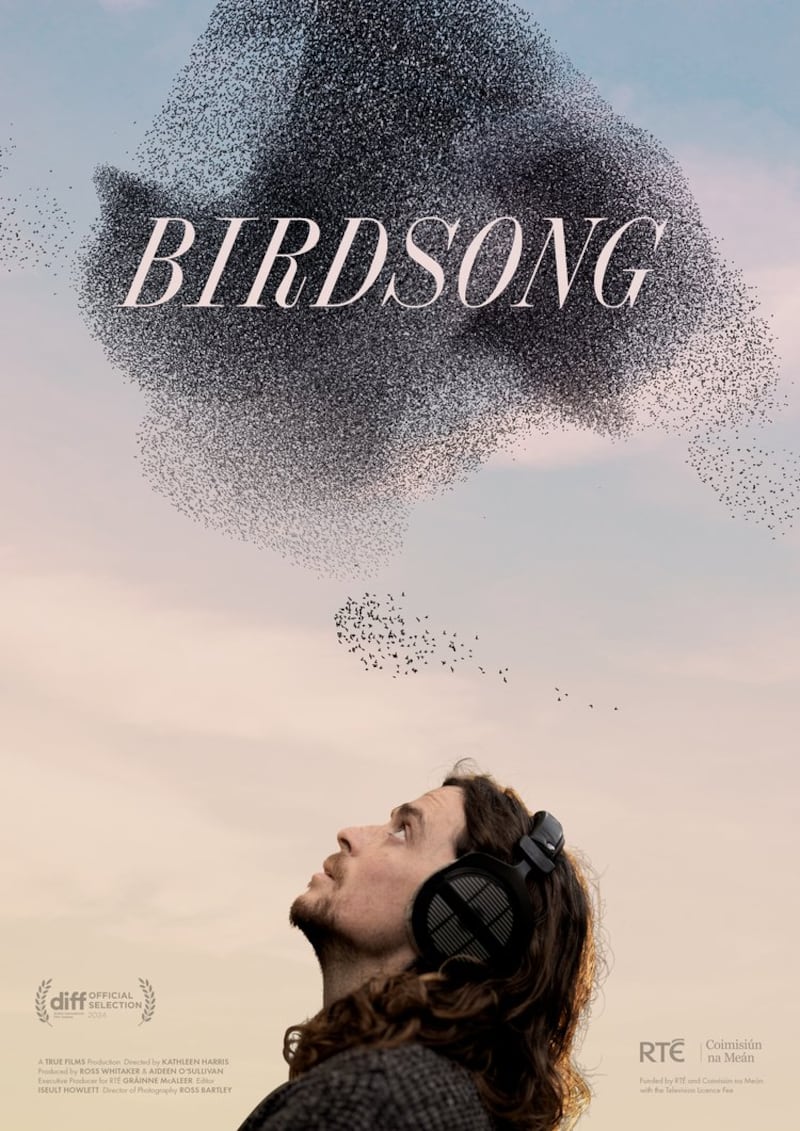
Having wanted to record on the island for years, Ronayne found himself in a special position. As he was listening to this strange song, he thought about the 6th-century monks who once lived there. “This is a soundscape that has remained unchanged for all these centuries, despite everything that’s gone on the mainland; modernisation, the building of so many roads and motorways, all of the machinery involved in our agricultural systems. This place is as is. The sound that I was hearing was the sound those monks would have heard from that very same location. That’s a privilege.”
It’s a stint of filming that Harris will never forget either. Filming on the Skelligs presented serious logistical challenges. The team spent months sorting out permits from the OPW and the National Park and Wildlife Service. To film any bird that’s endangered requires a permit. They had to charter a boat. There could only be a few of them on the island. They had to film at the weekend so they could use the then-vacant ranger huts. They were barred from stepping on anything green, only permitted to stand on rock, such are the number of nests and burrows on grass and ground. In the end, they were granted permission to stay on the island for two nights to film and record sound.
“I’ve been to wild places,” Harris says, “but I’ve never been somewhere that felt really given over to nature, to a species that isn’t human. That island exists for the birds ... To see that city in action, that isn’t a human city, I don’t think I’ve ever experienced anything like that.”
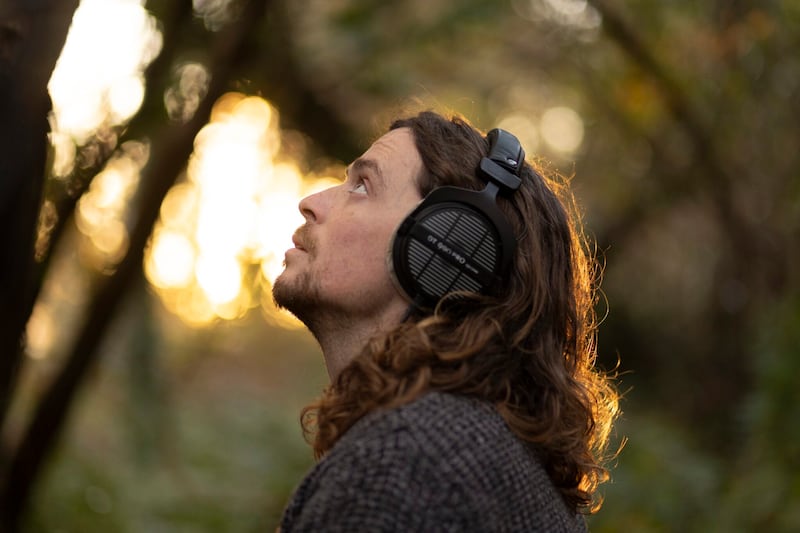
When Ronayne was a guest on Tommy Tiernan’s chatshow earlier this year, his appearance sparked a huge reaction. There is clearly a large appetite for what he has to say and how he says it. Ronayne would like to encourage anyone with a garden to not “plant it with non-native colourful plants from the garden centre. Let nature take control. See what grows there. Often there’s a native seed-bank just waiting to bounce back and come to life.”
On returning to Ireland he found it “distressing” to encounter “an ingrained obsession with cutting down trees or trimming back hedges when it really doesn’t need to be done ... The county councils and local town councils seem to have a habit of spraying weedkiller all over the towns to tidy the place up, or they cut trees or bushes in the middle of season, or they plant colourful non-native bushes and flowers all around. It’s often the case they don’t realise the harm that they’re doing.” Education, public pressure, advocacy and political action are key to addressing this, he says.
[ ‘My mission is to record all of the bird species in Ireland’Opens in new window ]
“I want people to be moved,” Harris says of her film, “It would be amazing if it in any way gives people a door to look at something about our natural world a little differently than they did before.” Harris says she feels there can be a “loneliness” in the worry that comes with the biodiversity and climate crises, but if people “can see a film and see people like Seán doing the work, I think that’s motivating, and hopefully it inspires people to keep on that path”.
Birdsong airs on RTÉ on May 26th. Seán Ronayne will appear at the Beyond the Pale festival in Wicklow this June, delivering a talk and leading a birdwatching walk on site.














